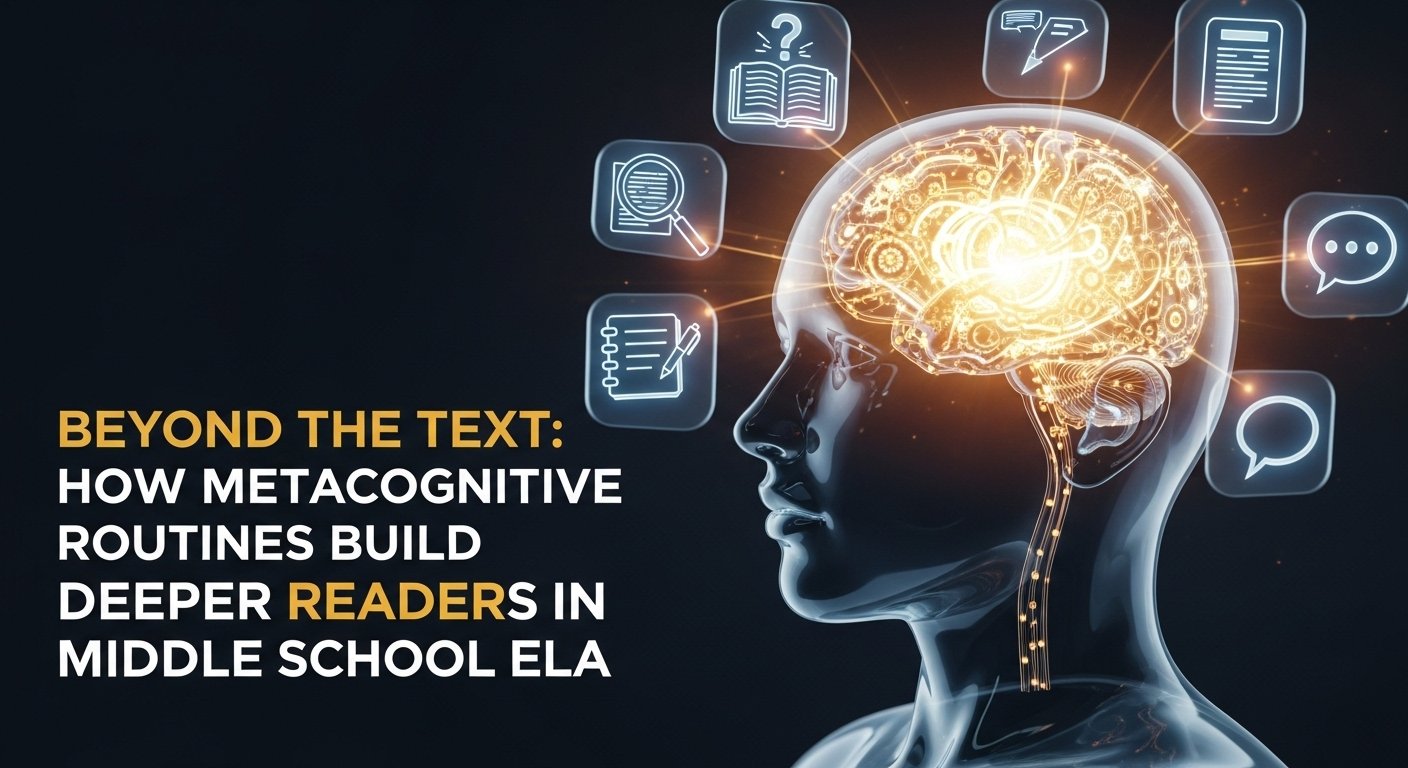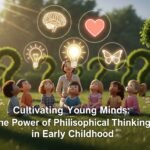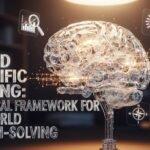Walk into any middle school ELA classroom during silent reading time, and you’ll see a familiar scene: students’ eyes moving across the page. But what’s happening behind their eyes? Are they simply decoding words, or are they truly engaging with the ideas, arguments, and artistry of the text?
The difference between these two states often comes down to metacognition—the ability to think about one’s own thinking. For middle school students, who are navigating increasingly complex texts and their own evolving identities, metacognitive routines are not just a nice-to-have; they are an essential toolkit for academic and personal growth.
These strategies transform reading from a solitary, passive act into an active dialogue between the reader and the text. By integrating simple, consistent routines into your ELA curriculum, you can empower your students to become more self-aware, critical, and confident readers. Here’s how.
Why Metacognition is a Game-Changer for Middle School Minds
The middle school brain is uniquely primed for metacognitive development. Students in grades 6-8 are beginning to think abstractly and form opinions about the world. They are also quick to declare, “I’m just not a good reader,” often confusing reading comprehension with innate ability.
Metacognition dismantles this fixed mindset. When we teach students to recognize their thought processes, we show them that reading is a skill built on strategies, not a genetic gift. This empowers them to take control of their learning. A student who can identify why they are confused by a paragraph about symbolism is no longer a struggling reader; they are a detective solving a puzzle.
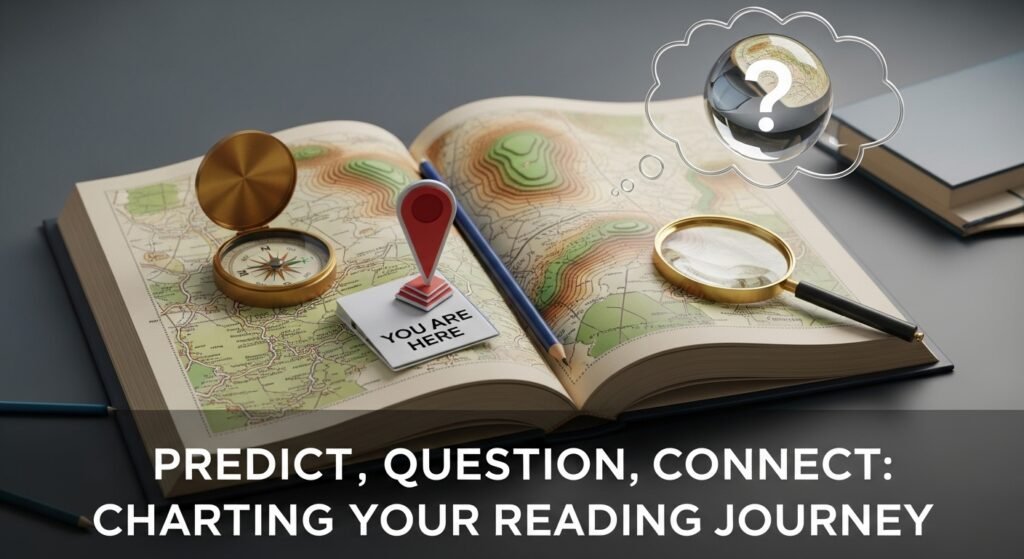
The Before-Reading Ritual: Priming the Mental Model
The metacognitive journey begins before students read the first sentence. A powerful pre-reading routine sets a purpose for reading and activates prior knowledge.
Strategy: The “Three-Minute Forecast”
Instead of simply telling students what they are about to read, ask them to generate predictions and questions based on textual clues.
- How it works: Provide students with the title, a key image, the first line, or the last line of the text. Set a timer for three minutes and have them write down in a journal or discuss with a partner:
- Prediction: Based on these clues, what do you think this text will be about?
- Question: What burning question does this clue bring up?
- Connection: What does this remind you of from your life, the world, or another text?
- Why it works: This routine forces students to consciously engage with their schema—their pre-existing web of knowledge. They start reading not with a blank slate, but with a mental model they are eager to confirm, refine, or even disprove.
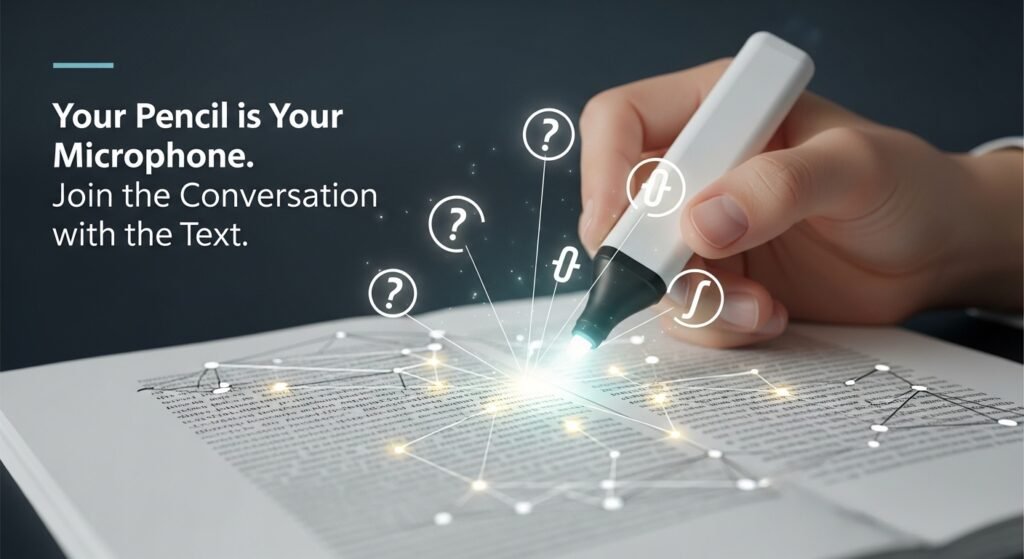
The During-Reading Dialogue: Annotating the Conversation
The most significant shift happens when we teach students that reading is a conversation with the author. Annotation is the record of that conversation, but students often don’t know what to write beyond underlining random sentences.
Strategy: The “Think-Mark” System
Simplify annotation with a limited set of symbols that correspond to specific cognitive actions. This prevents overwhelm and focuses the reader’s attention.
- How it works: Introduce and model these four simple think-marks:
- ?! – For something that is surprising or confusing.
- ➡ – For a connection (text-to-self, text-to-text, text-to-world).
- ★ – For a key idea or moment that seems crucial.
- 😊 / 😞 – For an emotional reaction (This is great! This is frustrating!).
- Why it works: These low-stakes, simple symbols are easy to remember and use. They externalize internal thoughts, making the invisible process of comprehension visible. Later, these think-marks serve as perfect entry points for class discussion or writing prompts.
Complete Guide to Student Loans USA – Student Finance USA
The After-Reading Reflection: Cementing Understanding
The learning solidifies when students reflect on the entire reading experience. This moves them from “What happened?” to “How did I understand what happened?”
Strategy: The “Process Journal”
After reading, dedicate five minutes for a structured written reflection that focuses on the how and why of comprehension.
- How it works: Provide students with a consistent set of sentence starters:
- “At first, I was confused by…”
- “I figured out the meaning of that challenging word by…”
- “The most important thing I learned about myself as a reader today is…”
- “My thinking changed when…”
- Why it works: This ritualized reflection forces students to articulate their problem-solving strategies. They begin to see themselves as agents in their own learning. Over time, they build a personal playlist of strategies that work for them (e.g., “Oh, I get confused with flashbacks. I need to stop and make a timeline.”).

Putting It All Together: A Classroom Culture of Thinkers
Implementing these routines isn’t about adding more to your plate; it’s about shifting the culture of your classroom.
- Model Relentlessly: Think aloud for your students. Read a challenging paragraph and verbalize your internal monologue: “Hmm, this word is new. The context makes it sound like it means ‘angry,’ but I’m not sure. I’ll underline it and check later.”
- Start Small: Introduce one routine at a time. Practice it for several weeks until it becomes a natural part of your classroom rhythm.
- Make it Authentic: Share your own reading struggles and processes. When you model being a lifelong learner who still encounters challenges, you give students permission to do the same.
The ultimate goal is to create a classroom where students are not just assigned reading but are equipped to conquer it. By embedding these metacognitive routines, you’re not just teaching students what to read; you’re teaching them how to think. And that is a skill that will serve them far beyond the walls of your ELA classroom.
Philosophical Inquiry in Preschool
Source & Disclaimer:
This article was inspired by and adapted from the work of educators and researchers exploring metacognition in ELA, including concepts discussed on Edutopia. It has been thoroughly rewritten and expanded with original commentary, strategies, and structure to provide unique value. We recommend always crediting original sources when adapting teaching strategies.

